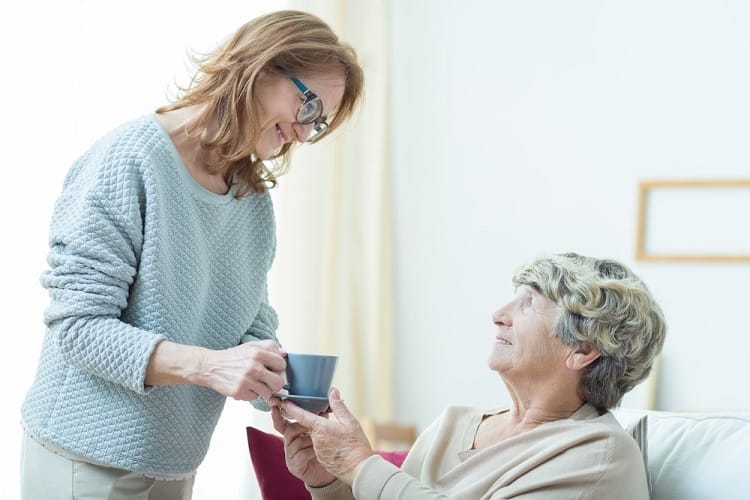Hospice care, also called end-of-life care, provides terminally ill patients pain relief and management during their final days. In hospice care, the treatment pivots from curing illness to making the patient as comfortable as possible. Many patients do not want to die in a hospital, surrounded by machines and medical professionals in cotton scrubs. Hospice offers a gentler and more peaceful alternative.
Unfortunately, the 2020 coronavirus pandemic has complicated the already complex reality of hospice care for patients and their families. Here are six ways the pandemic has affected hospice care so far:

Dying in A Hospital Sounds Worse Than Ever
Due to the highly infectious nature of the COVID-19 virus, many coronavirus patients pass away alone in a hospital. Sadly, their relatives are usually unable to visit or comfort them during their final moments. Understandably, many people have seen the news and decided that they’d rather pass away at home, surrounded by loved ones, instead of being alone in a hospital. This desire is especially true for elderly patients who are close to death.
Patients Can’t Always Get the Hospice Care They Want
Even before the pandemic hit, many people who wanted hospice care still ended up passing away in hospitals. Unforeseen medical complications or a lack of the right equipment forces many people to the hospital at the end of their lives. End-of-life care at home is still a relatively new concept. Now, the pandemic has made everything worse. The demand for hospice care has increased. Severely ill patients do not want to go to hospitals that are overwhelmed with the virus, and hospice facilities face huge medical equipment shortages. Furthermore, some hospice facilities are experiencing a shortage of staff, as their own workers get sick or decide that the risk of contracting coronavirus isn’t worth coming to work. Just because your relative wants hospice care does not mean that they will be able to get it.

There Are Significant Equipment Delays
While the shortages of personal protective equipment (PPE) were widely reported in hospitals, these supply chain issues also affected hospice care. Hospice workers need PPE to care for patients, especially those with infectious diseases such as COVID-19. While their stretch scrubs and Bluetooth stethoscopes are important, hospice workers rely on gloves, shoe covers, masks and eye gear to adequately protect themselves. Some equipment shortages have eased as factories in other countries reopen, but with coronavirus cases on the rise in the U.S., shortages might occur again. These shortages might affect PPE, oxygen tanks, palliative medication and other drugs needed to provide optimal hospice care. When your loved one is gravely ill, even a day without extra oxygen can feel like an eternity.
Coronavirus Means Added Complications
If a patient is sick with coronavirus, or likely to contract it, hospice care becomes even more complicated. For example, patients who already have coronavirus might wish to spend their last days at home, but staying home will increase the risk of passing the virus to their loved ones. Further, patients who don’t already have the virus are more likely to contract it if they go to the hospital. If hospice care at home isn’t an option, patients and families must make some tough decisions. If a family chooses to care for a COVID-19 positive patient at home, they will need to find FDA Cleared PPE, which might be challenging. End-of-life was already difficult and emotional to navigate, and the pandemic has only made choices even harder.

Families Are Acting as Caretakers More Than Ever
Some families choose to act as caretakers for their loved ones. They might not be able to secure home health care help, or they may be worried that outside medical professionals will bring the coronavirus into their home. While families often participate in end-of-life care for their loved ones, the pandemic has reduced options and created added stressors for many. Instead of simply hiring professionally-trained staff, some families have to care for their dying loved ones entirely on their own. Even if families want help and hospice care is available, they might not be able to afford it. Since so many people have lost jobs and experienced other financial losses, these problems compound each other.
Loved Ones Must Remain Distanced, Even at Home
Some families do manage a best-case scenario, with their loved ones resting comfortably at home. But, if someone tests positive for COVID-19, everybody in the household must isolate from their dying loved one. Many people who hoped to spend their last days surrounded by family at home still have to leave the world alone. Many people live too far away from their dying family members to travel and say goodbye in person.
Hospice will only continue to evolve as the coronavirus pandemic progresses and changes. While hospice is still a gentle alternative for many patients nearing the end of their lives, it’s been negatively impacted by the pandemic.

